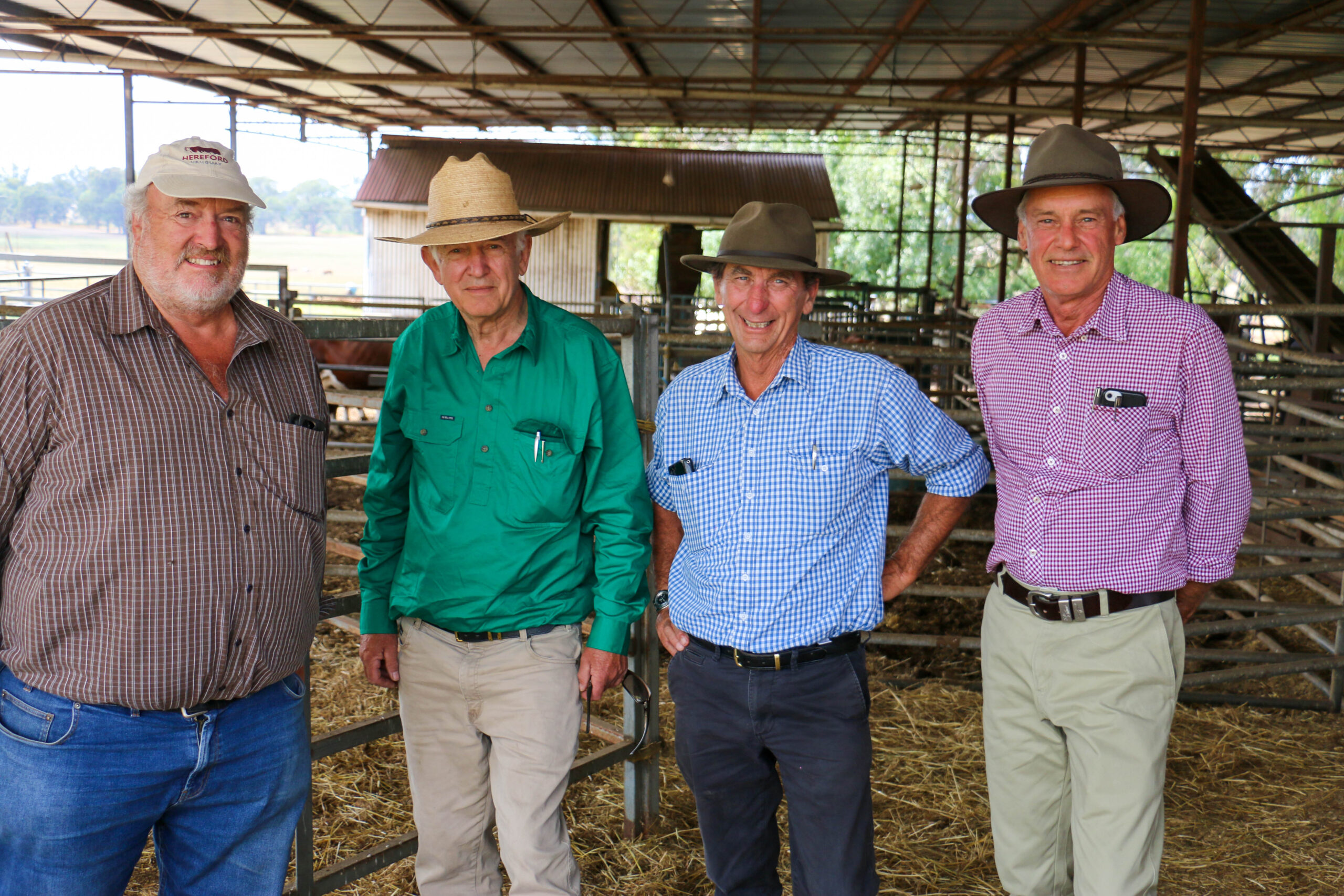There were plenty of Hereford bulls snapped up during the 2023 Stock and Land Beef Week open days by commercial producers, confident in the outlook for the industry.
David Meikle sold four bulls to average $8000 at Beef Week with a steady flow of visitors through the day to his Tarwin Poll Herefords at Meeniyan.
He then joined the pilgrimage of breeders visiting studs in northeast Victoria and southern NSW, where visitors numbers reached over 80 inspecting more than 100 bulls at Yavenvale Herefords, at Adelong.
“There is a certain quiet confidence among producers going forward – they had recognised prices had come back in the last few months but there is still the understanding the industry is in a good place,” Mr Meikle said.
“Those record prices had resulted in people catching up on capital works and some money put away for a rainy day. The prices are still pretty solid when compared to two or three years ago. “
Stan Walker, Charellen Poll Herefords, Pearsondale, sold one bull for the morning but cited a lack of interest in joined females despite strong demand last year.
“Everyone was expecting a correction and hopes the prices now plateau, so they know where they are headed,” he said.
“We sold 10-month-old heifers last year and expected some interest in the joined females, but maybe people have filled their female orders.”
David Meikle said last year’s prices were based around the national herd rebuild and the industry may have reached a plateau for female demand.s demand .
“I’m confident prices will rise a little going into March – the supply side has come out of an uncertain period over the last three months, the flooded areas are getting themselves sorted out and as we go through into the autumn, processor prices will stabilise a little stronger than what they were in the last few weeks.
“It certainly won’t go to the heights of last year – even with the rising cost of living, people still like to eat quality meat and will consume mince during the week so they can have a nice steak on the weekend.
“Stan and I are part of the Gippsland Performance Herefords Sale and it seems to be building momentum. The feedback from people who bought at that sale is positive.
“The online sales format seems to be working and our clients are getting more comfortable with that.
“They need to be comfortable with the product we put up is what they are expecting to see.”
Mr Meikle said breaking into a market with younger bulls than normally sold in the region was challenging and required education of the use of 18-month-old bulls.
“For people calving in the spring it is a perfect time for them to buy a bull but they have to be prepared to look after him when they get him home,” he said.
“You get that extra joining and can use him at a lighter weight when he is easier to manage.
“You have those genetics one year earlier than if an older bull was purchased.
“Producers do have to recognise he is a growing animal so nutrition is important for the bull as well as heifers.”
Mr Meikle recommended joining yearling bulls to about 30 heifers.
“Yearling bulls need to be sound and fertile – at the Performance Sale we have them semen tested, and structurally assessed by an independent assessor.
“Structural soundness in the Hereford breed has improved out of sight in the past 20 years – people are very conscious of having sound cattle going out to work.
“Typically, producers should be able to get a working life of up to eight years of age from a Hereford bull. Although producers should watch for the impact of injuries and wear and tear on their older bulls.
“Longevity is also reflected in the cow herd, if a bull is structurally correct he is likely to breed that through into the cow herd resulting in greater fertility or stayability.
“In our herd I look sceptically at the cows once they reach 10 years, by then they are usually starting to feel their age with missing teeth and/or general wear and tear.”
He joins heifers to calve at two years over a six-to-eight-week period and considers calving ease a priority for bulls covering both the heifers and cows with commercial clients placing emphasis on the trait.
He is wary of large, framed cows and believes they tend to cull themselves through reduced fertility and feed efficiency coupled with a greater tendency to injure themselves.
“We get cold wet winters and those smaller cows are putting energy into milk and the calf rather than maintaining their own body heat, although getting the balance right is always a challenge.”

Bill Lack, Willack Poll Herefords, Dawson, Geoff Coghill, Ke Warra Poll Herefords, Moorooduc, David Meikle, Tarwin Poll Herefords, Meeniyan, and Stan Walker, Charellen Poll Herefords, Pearsondale, inspecting cattle during 2023 Stock and Land Beef Week.







